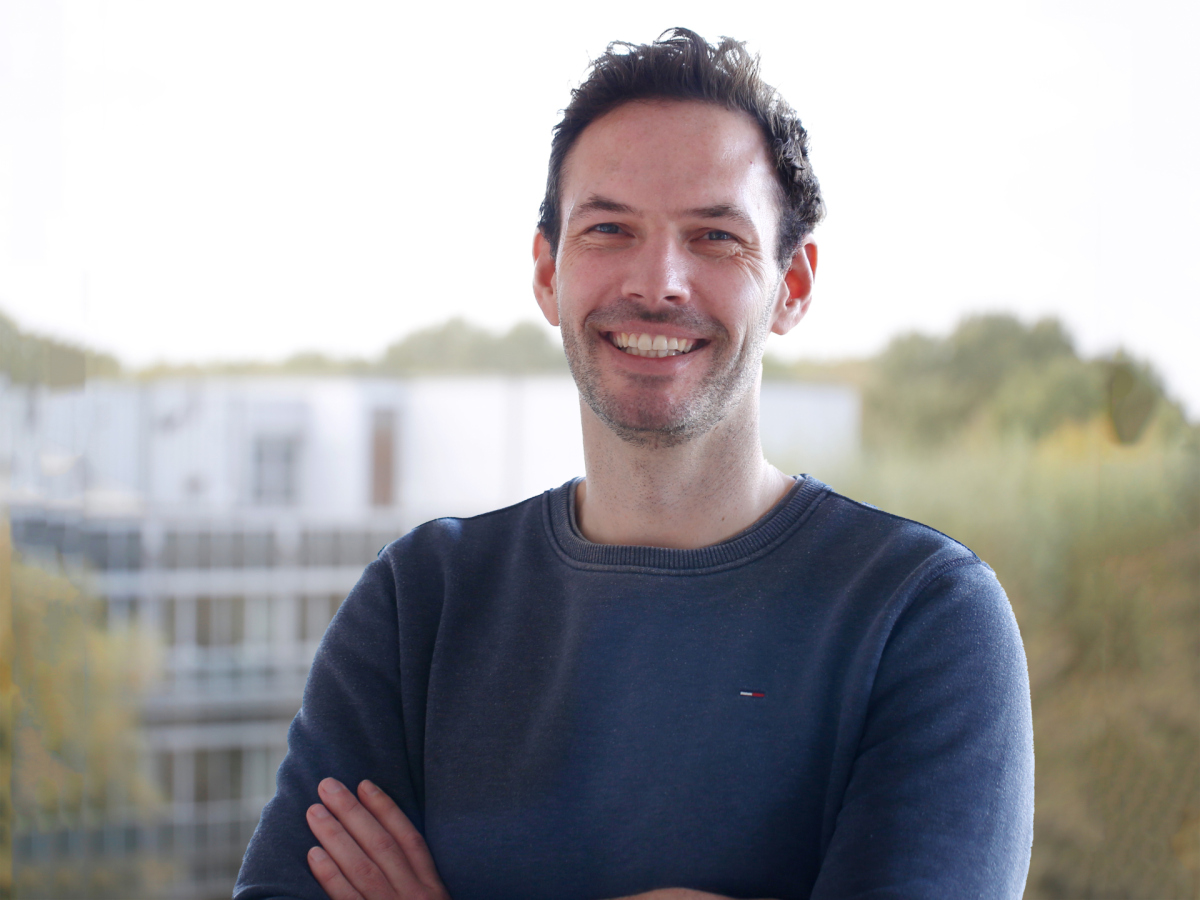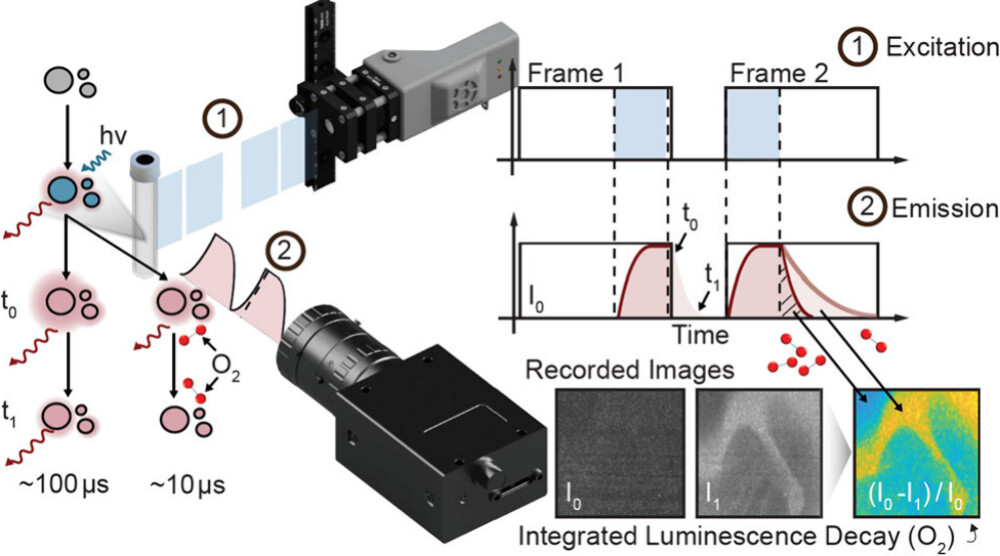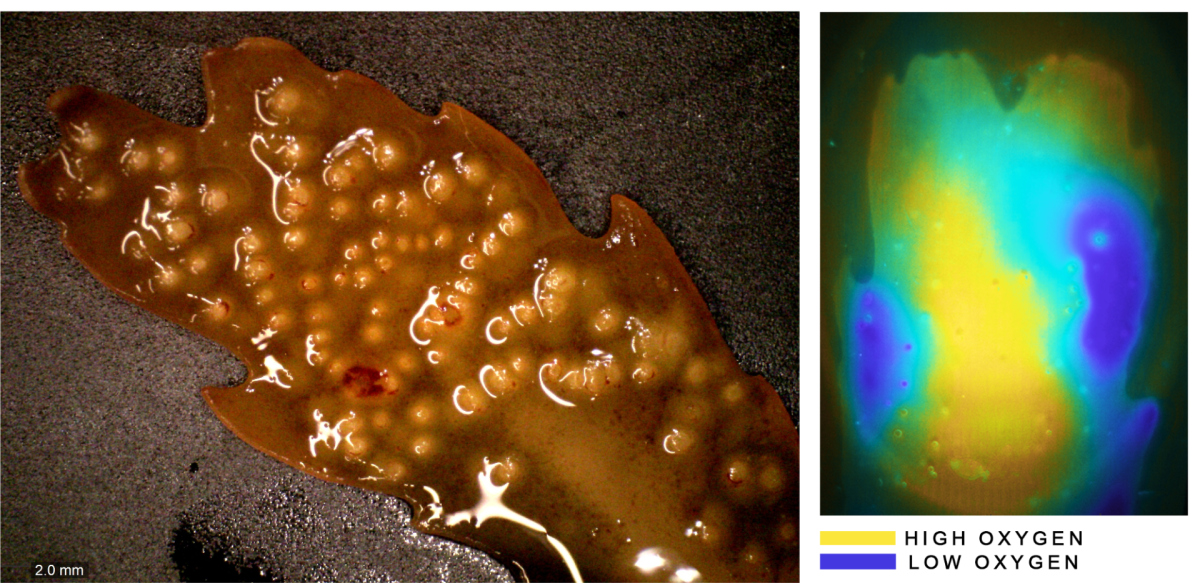- Press Office
- Press releases
- New Method for Measuring Luminescence Lifetime
New Method for Measuring Luminescence Lifetime Offers Breakthrough in Scientific Imaging
Take oxygen, for example: Oxygen is a key molecule for life, and in order to understand ecosystem dynamics it can be important to follow its ways in much detail. Optical sensors that use luminescent dyes have long been used to map oxygen levels in marine systems: Oxygen reduces the phosphorescence lifetimes of the dyes, which thus indicate oxygen concentrations. However, until now, imaging luminescence lifetimes has required costly, specialized equipment, making the technique out of reach for many research and industrial applications. A joint research team at the Max Planck Institute for Marine Microbiology, Leibniz-Institute for Baltic Sea Research and University of Copenhagen, in collaboration with international partners, has developed a pioneering method for imaging the lifetime of luminescent signals. The breakthrough technique enables high-speed luminescence lifetime measurements, transforming fields that rely on optical sensing and chemical imaging. The findings have been published in the journal ACS Sensors.
Bringing luminescence lifetime measurement to the masses
“Our new integrated method simplifies these measurements, allowing researchers to determine luminescence lifetimes using standard camera systems”, explains Soeren Ahmerkamp, who carried out the research at the Max Planck Institute for Marine Microbiology in Bremen and at the Leibniz-Institute for Baltic Sea Research in Warnemünde, both in Germany. By synchronizing short bursts of light with precise camera timing through a technique called frame-straddling, two images are captured: One that records the initial light burst and another that measures the initial light burst and the longer-lasting luminescent after-glow. The difference between these images reveals the integrated luminescence lifetime, providing a detailed and accurate readout at time scales below one millisecond.
“We offer a more accessible way to measure luminescence lifetimes, which is often considered the gold standard in optical sensing”, says Michael Kühl from the University of Copenhagen, Denmark. “By adopting the frame-straddling technique originally developed for high-speed flow measurements, we’ve created a technique that can be used with a wide range of commercially available cameras. This will make it possible for a wider range of laboratories to perform high-resolution lifetime imaging.”
Unlocking new possibilities in chemical imaging
The ability to measure luminescence lifetimes with ease and high-speed opens up new possibilities for chemical imaging. Researchers can now record oxygen dynamics with much higher temporal and spatial precision. “We tracked oxygen dynamics around algae within a hundredth of a second and visualized how oxygen-consuming particles move through water, thereby showcasing the utility of the method”, says Ahmerkamp. “The integrated luminescence decay method can be used to gain deeper insights into how oxygen varies in marine environments, from the scale of microscopic particles to entire ecosystems.”
Accelerating the pace of discovery in science and industry
This new approach could stimulate more luminescence lifetime imaging applications in environmental and biomedical sciences and engineering. By making high-precision measurements more accessible, it can stimulate novel experimental approaches, accelerating the pace of discovery in these areas.
“Our goal was to democratize access to a powerful analytical tool,” adds Ahmerkamp. “We believe this method will enable researchers to explore complex chemical interactions with greater ease and flexibility than ever before.”
Original publication
Soeren Ahmerkamp, Cesar O. Pacherres, Maria Mosshammer, Mathilde Godefroid, Michael Wind-Hansen, Marcel Kuypers, Lars Behrendt, Klaus Koren, and Michael Kühl (2024): Novel Approach for Lifetime-Proportional Luminescence Imaging Using Frame Straddling. ACS Sensors (2024).
Participating institutions
Max Planck Institute for Marine Microbiology, Bremen, Germany
Leibniz-Institute for Baltic Sea Research, Warnemünde, Germany
University of Copenhagen, Denmark
University of Aarhus, Denmark
University of Uppsala, Sweden
Contact
Scientist
MPI for Marine Microbiology
Celsiusstr. 1
D-28359 Bremen
|
Room: |
3130 |
|
Phone: |

Head of Press & Communications
MPI for Marine Microbiology
Celsiusstr. 1
D-28359 Bremen
Germany
|
Room: |
1345 |
|
Phone: |


